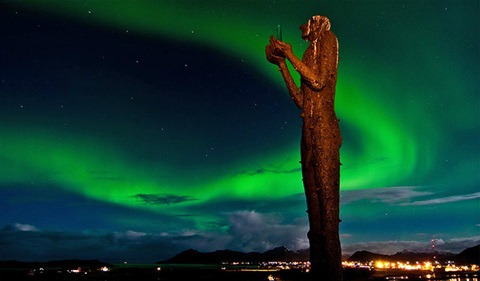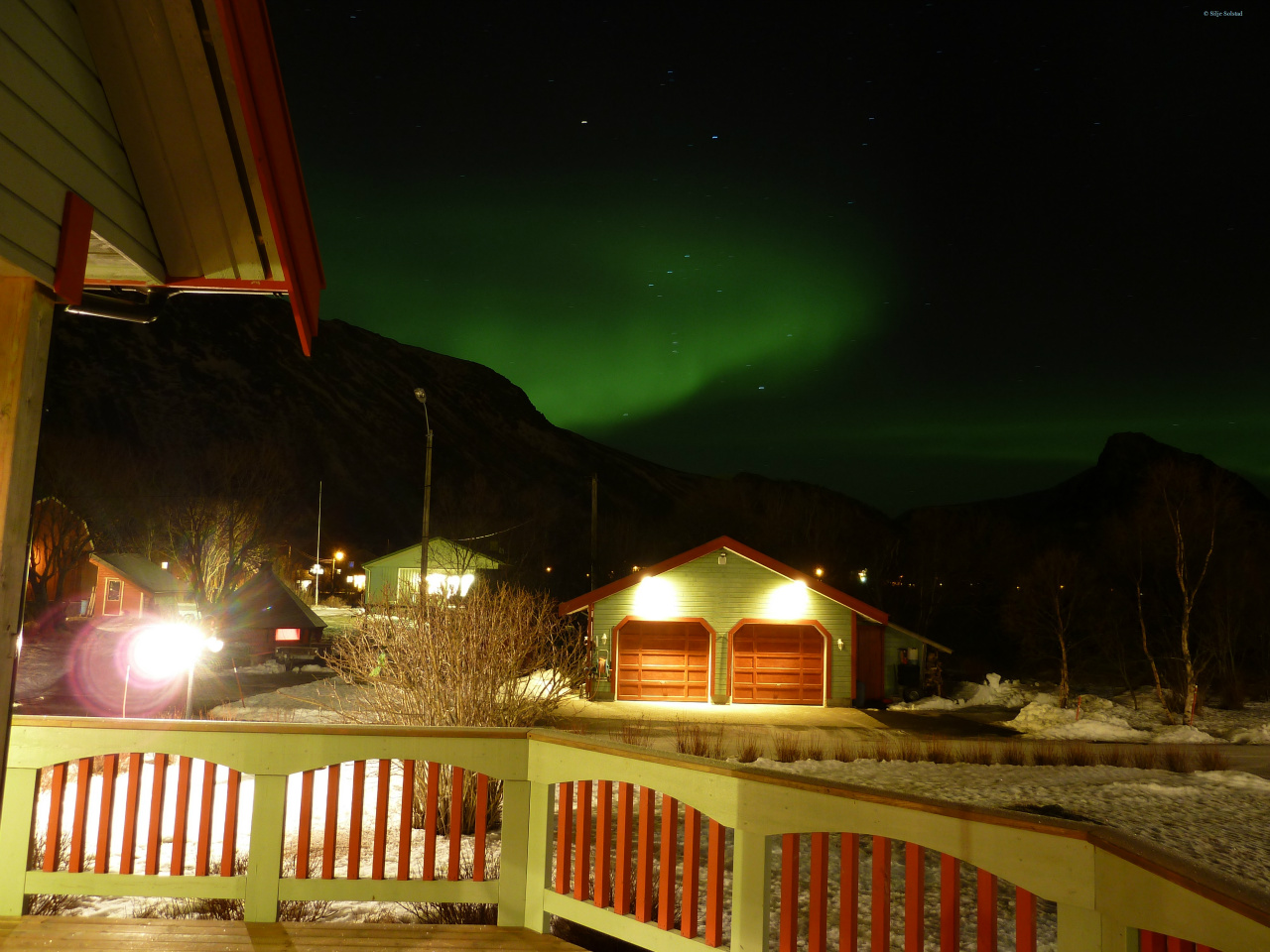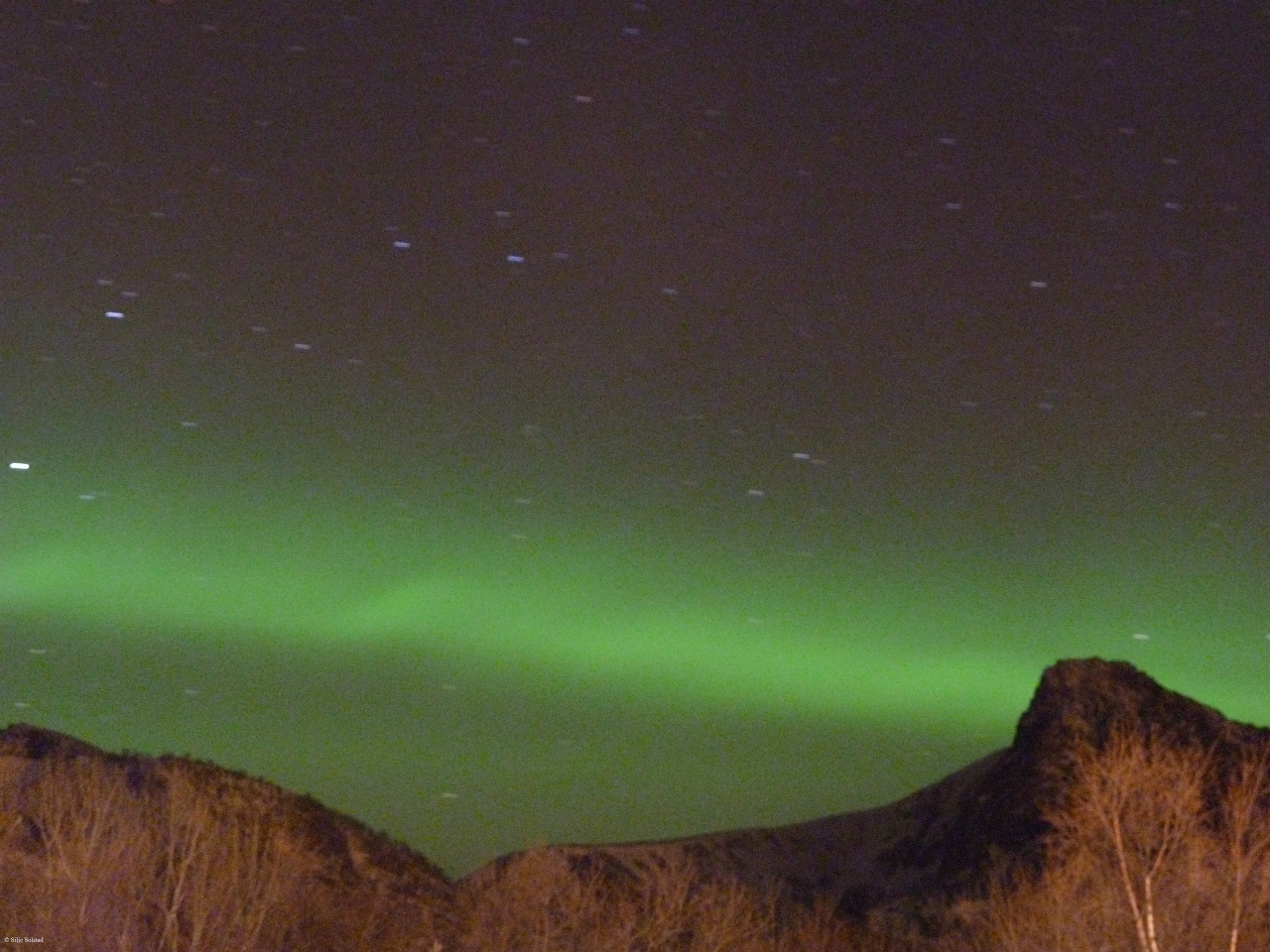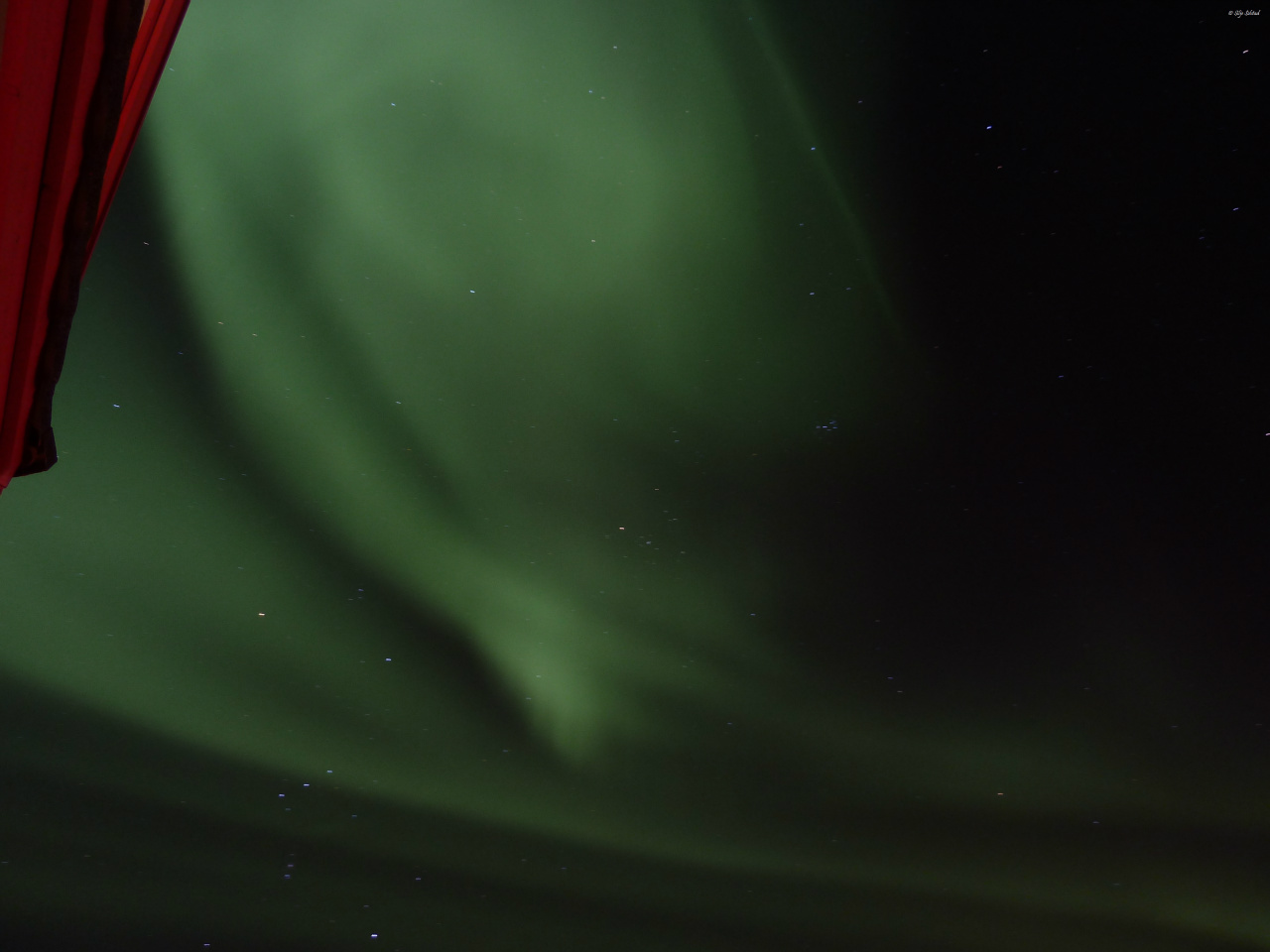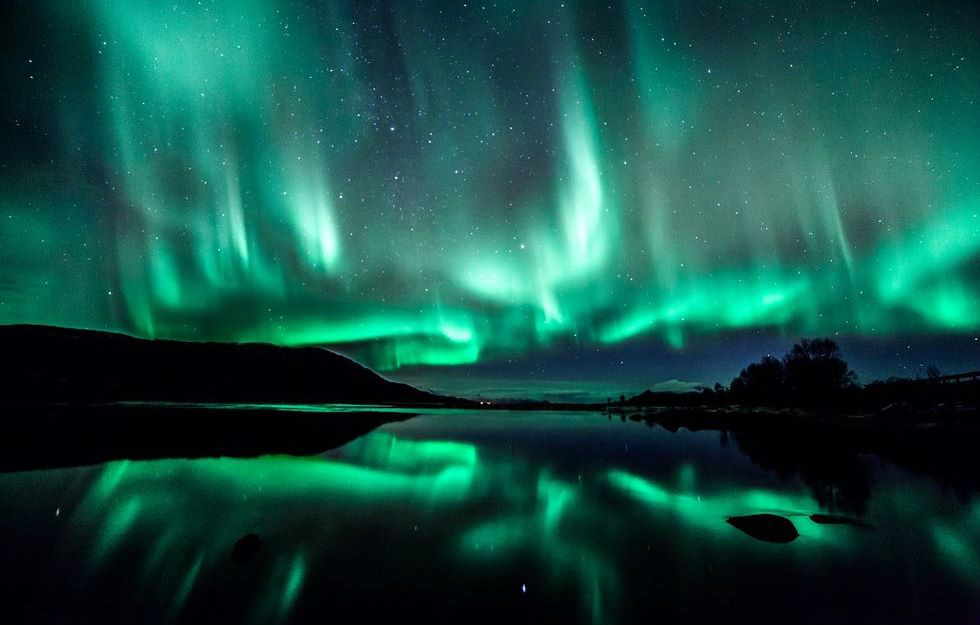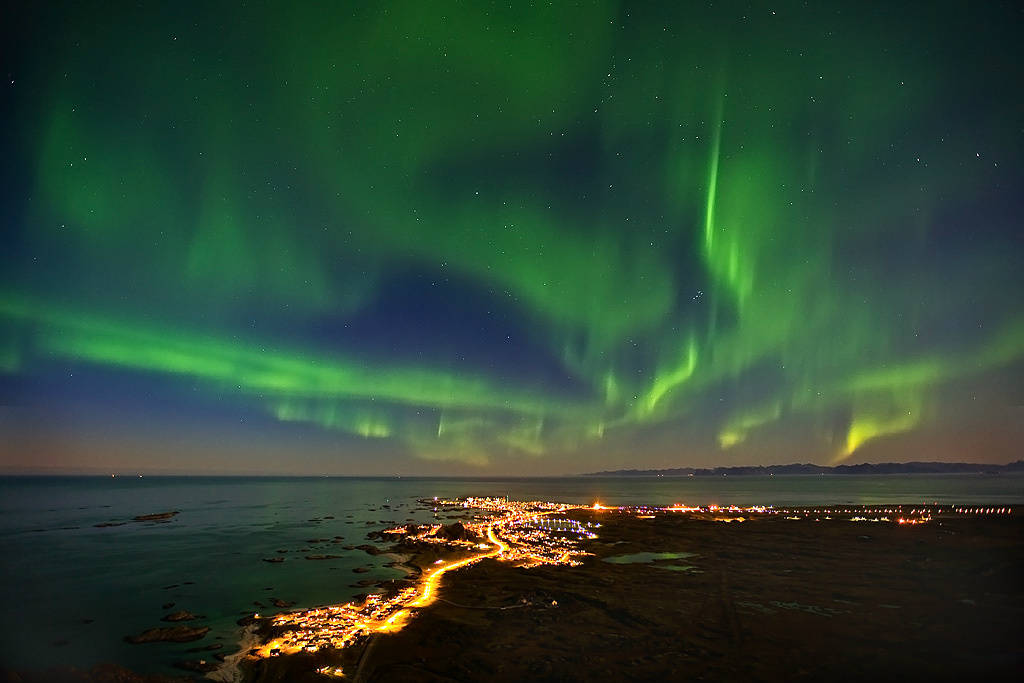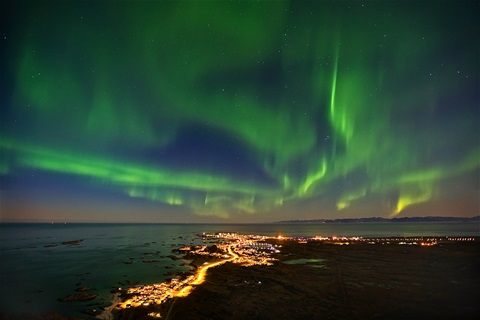Northern lights and
superstition
For the general public, the scintillating northern lights has traditionally been considered as spectacular and frightening – regardless of what research has revealed. In bygone eras, popular superstition caused people to regard
the northern lights as something negative. It was not uncommon that Northerners only a few generations ago saw the fiery northern lights as an ill omen foreboding both lean years and plagues – the more impetuous the light, the worse things would be.
Parents would chase the children indoors and advise them to make themselves as unnoticeable as possible. On the other hand, it was common practice to wave white linen at the northern lights if one wanted to intensify the shimmering …
What
are the northern lights?
Aurora polaris (polar light) is a physical phenomenon caused when the solar wind is stronger than normal, with great electrical discharges emitting electrically charged particles towards the earth. The particles
are electrons and protons that create light as they collide with the gases in the earth’s atmosphere. Polar light is located at a height of between 90 and 180 km above the earth’s surface. The phenomenon can be observed on the night skies in a
belt running around the magnetic poles – the northern light as oval – and can be seen by us in the Northern Hemisphere. Polar light manifests itself as billowing light that changes in shape, colour and intensity, from dark blue and hues of
green and yellow, to red and orange.
Polar light in the Northern Hemisphere is called aurora borealis (dawning red in the north) or the northern lights, while polar light in the Southern Hemisphere is called aurora australis or the southern lights.
Colourful
The northern lights come in many different colours. The colours reflect the gases in the middle atmosphere. The greenish-yellow colours, which are the most distinct and common for the northern lights,
derive from oxygen. The red also comes mainly from oxygen, with the addition of nitrogen. The violet colour we often see at the bottom of the northern lights comes from nitrogen, and the same is true of most of the bluish colour.
Learn
and experience
The Northern Lights Centre at Andenes is a popular excursion for pupils, students and teachers from all over the country who participate in various activities arranged by NAROM (www.narom.no).
